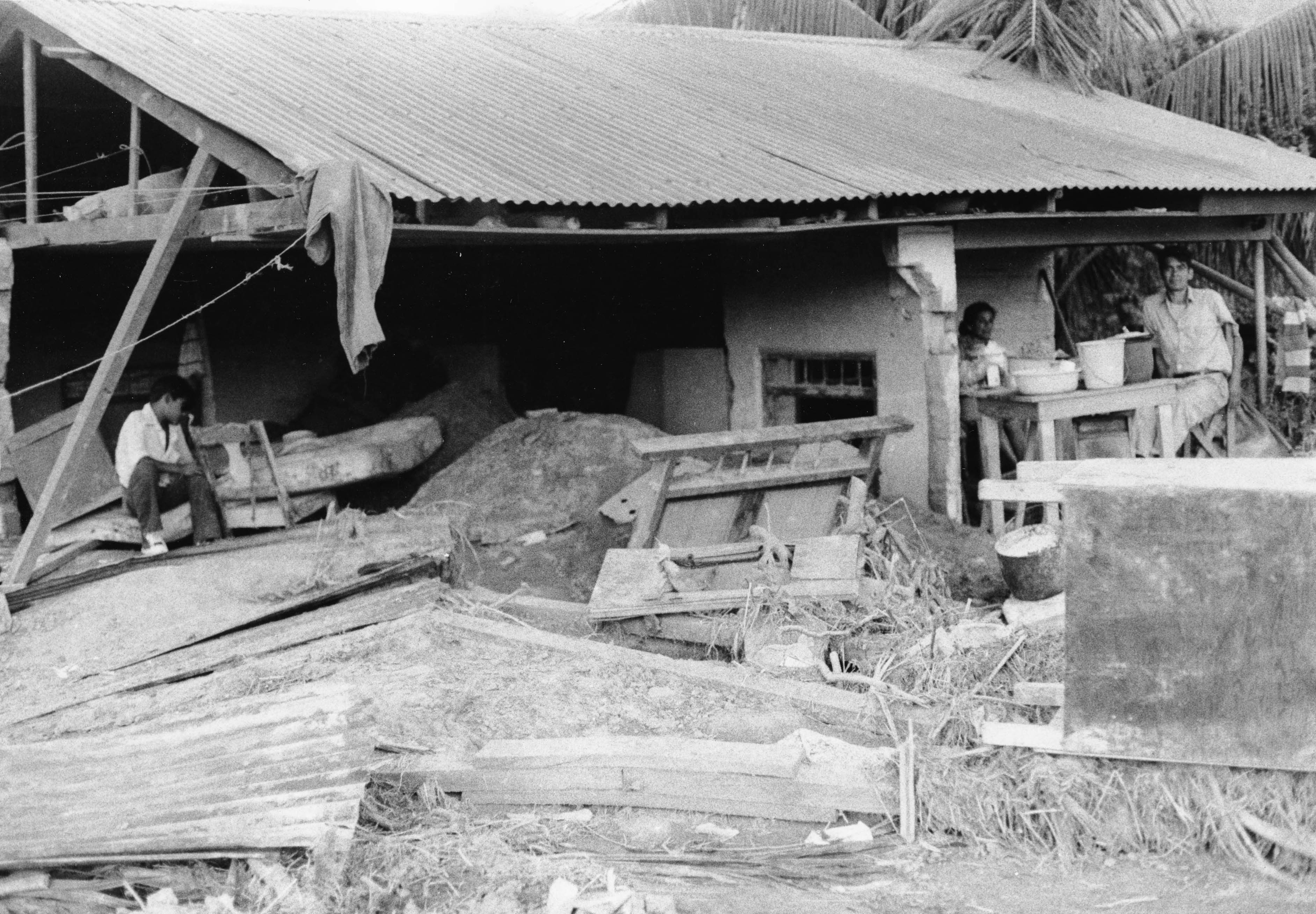Hurricane Fifi (1974) Relief Efforts in Honduras

In mid-September 1974, the third-deadliest Atlantic hurricane in recorded history tore through nine countries in Central America and the Caribbean. Northern Honduras received the bulk of the impact, where flash flooding and mudslides resulted in 2,000 to 5,000 deaths in just one night. The estimated total number of casualties surpassed 8,000 people. These newly digitized photos from the Church World Service collection document the relief efforts in the weeks and months following the catastrophe.


Disaster relief efforts were slow to start, given the poor road conditions and lingering inclement weather conditions limiting airlifts. Once supplies could be flown in, they were distributed among the hardest-hit areas in the Sula Valley, including the towns of Choloma and El Progreso.


Flash flooding swept through homes indiscriminately, resulting in the destruction of over 10,000 “well-constructed” homes. An estimated 150,000 Hondurans were displaced as a direct result of the hurricane.

In other areas where residents lived in thatched champas or huts, entire settlements were washed away. A Miami Herald article describes one such case:
“We are told of a village called Armenta, somewhere near here, where 400 families disappeared in a mudslide. Hardly anyone here [among foreign relief workers] has ever heard of Armenta or knows where it is, but from what is known of Fifi’s attack on the mountains that range this country, it is possible to accept any report as plausible.”
Large-scale rebuilding projects resulted in concrete slab housing in six villages in the area. In Choloma, 600 homes were erected.
The building project in San Jose de los Laureles was coordinated by engineer, entrepreneur, and humanitarian Raymond B. Fogg. Fogg developed the production method of the concrete slab homes, which were erected in San Jose at the rate of four homes per day.

Multiple countries contributed to the relief efforts. Even Guatemalans, who lost 100 of their fellow countrymen to the hurricane, organized donations for Honduran survivors.


Related Resources
- Church World Service (RG-529) Digitized Records
- Raymond Fogg’s Eulogy
- "Outside Nations Bring Supplies For Hondurans". The Miami Herald. September 24, 1974.
- "A Hurricane in Honduras". The Times. October 7, 1974.
- "Hurricane Fifi, Her Fury Leaves 5,000 Dead in Central America". Boca Raton News. September 22, 1974.
- Hurricane Fifi-Orlene Wikipedia Article
- CWS Response to Hurricane Flora (1963) Blog Post




















